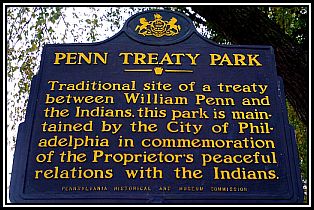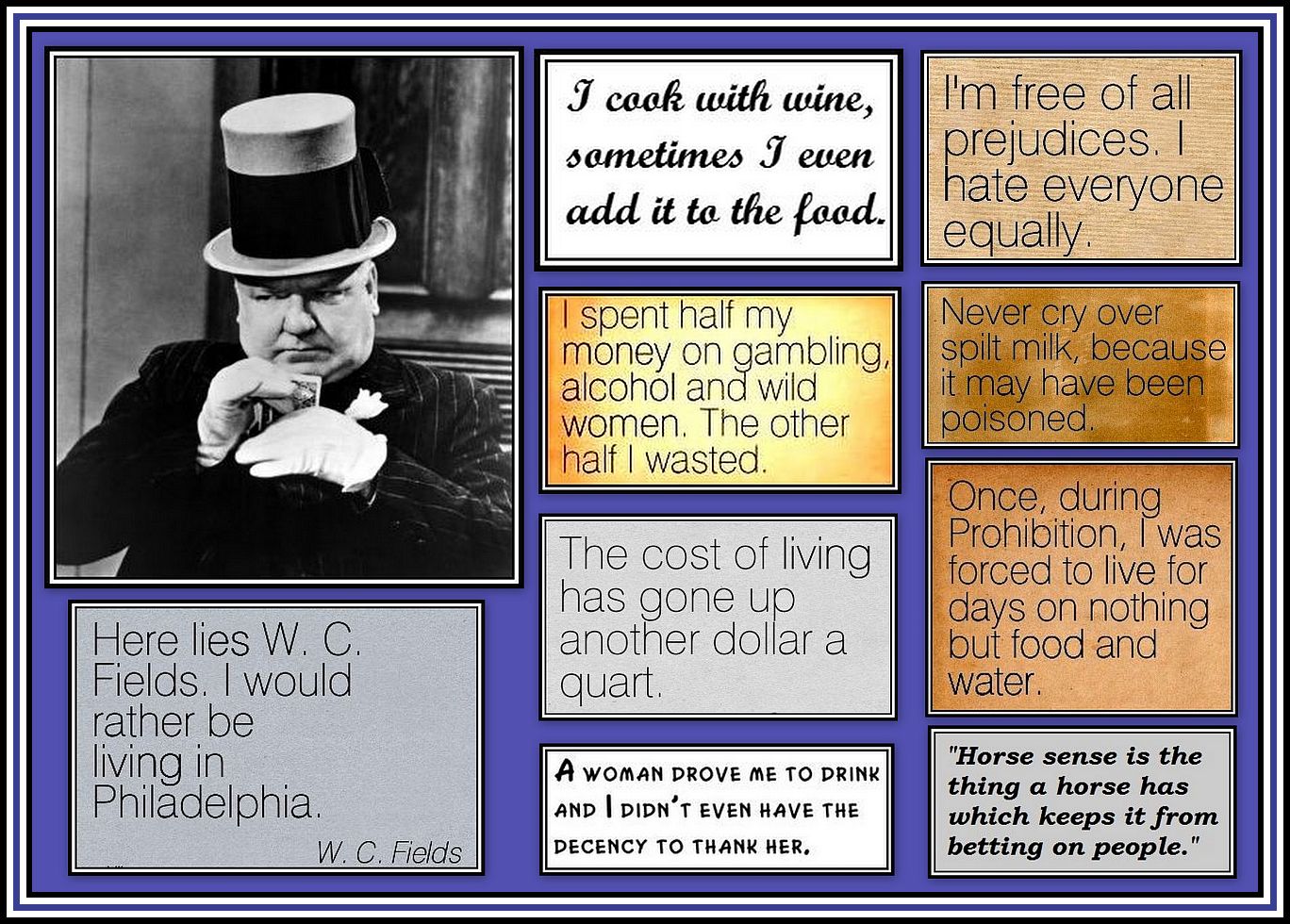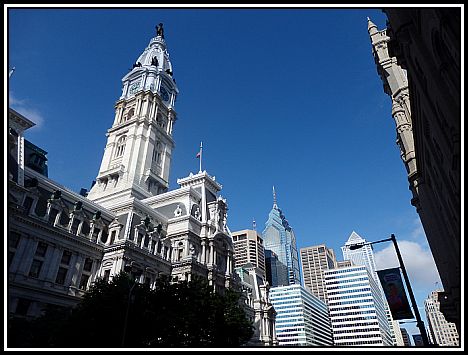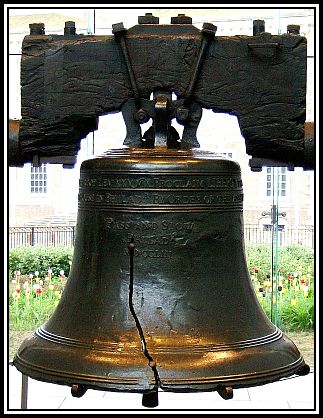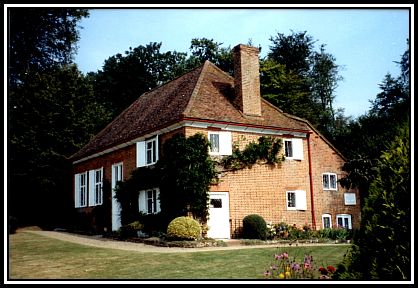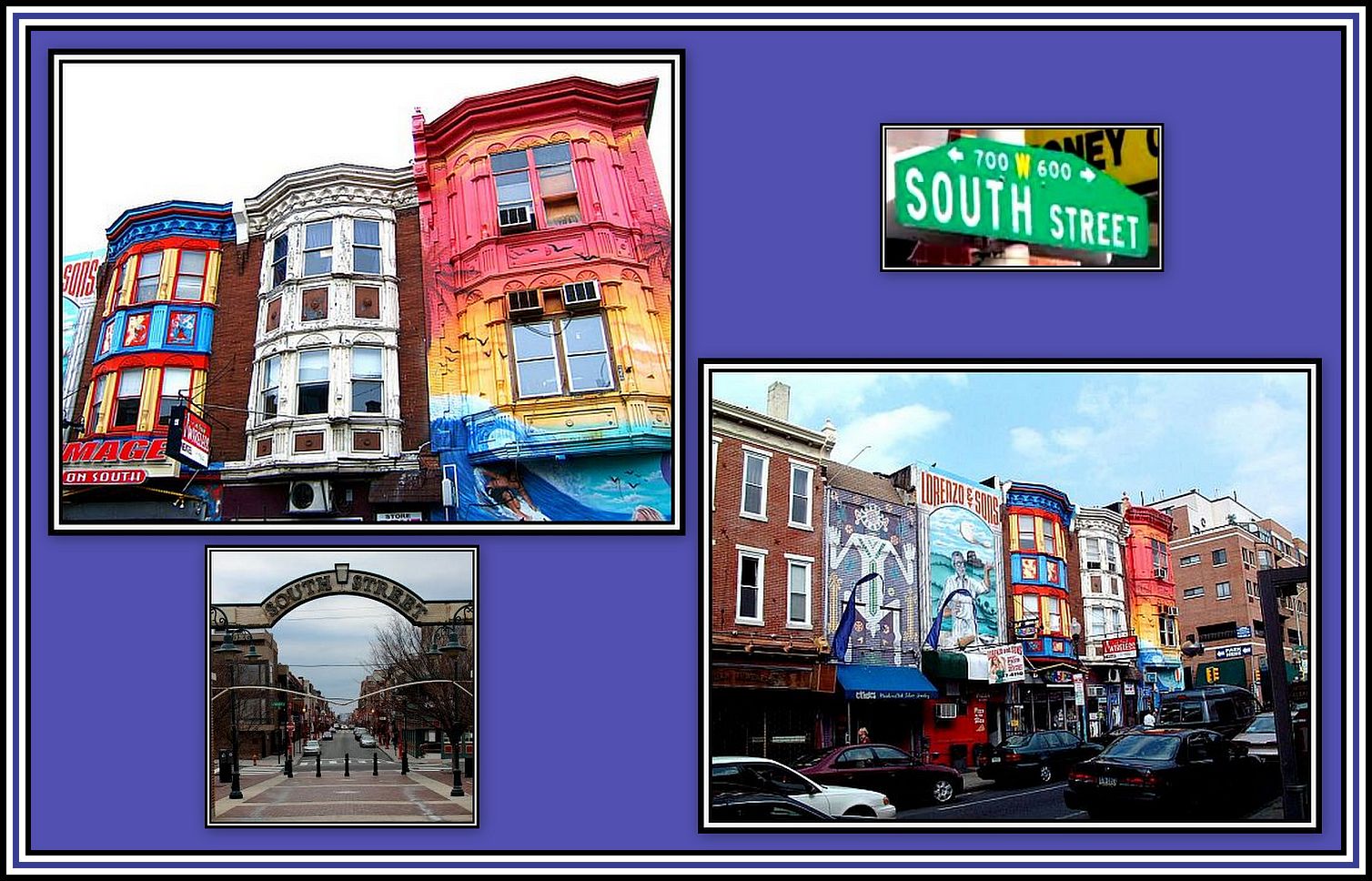THE WANAMAKER ORGAN
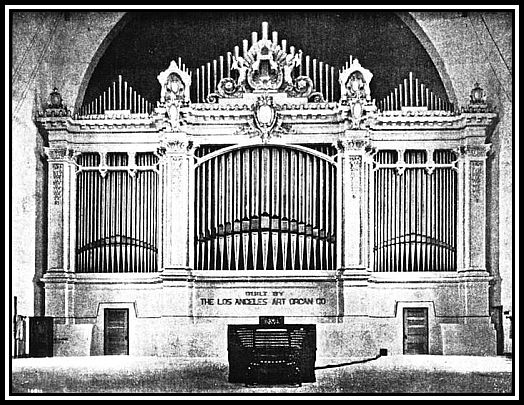 The Grand Concert Organ in Festival Hall of the St. Louis World’s Fair, 1904
The Grand Concert Organ in Festival Hall of the St. Louis World’s Fair, 1904
—ooOoo—
PART TWO:
I’M OFF TO PHILADELPHIA IN THE MORNING
Click here to hear John McCormack sing I’m off to Philadelphia in the morning
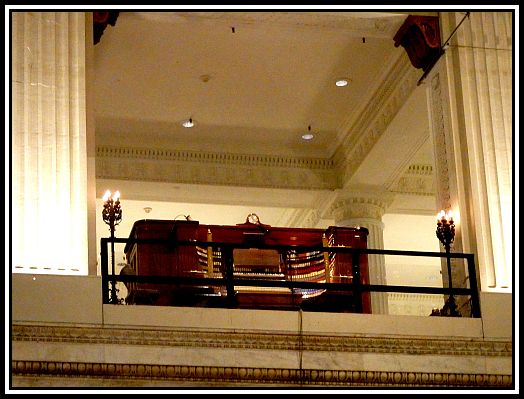 The Wanamaker Organ Console installed between 1930 and 1932
The Wanamaker Organ Console installed between 1930 and 1932
-oOo-
THEY WENT TO PENNSYLVANIA ……..
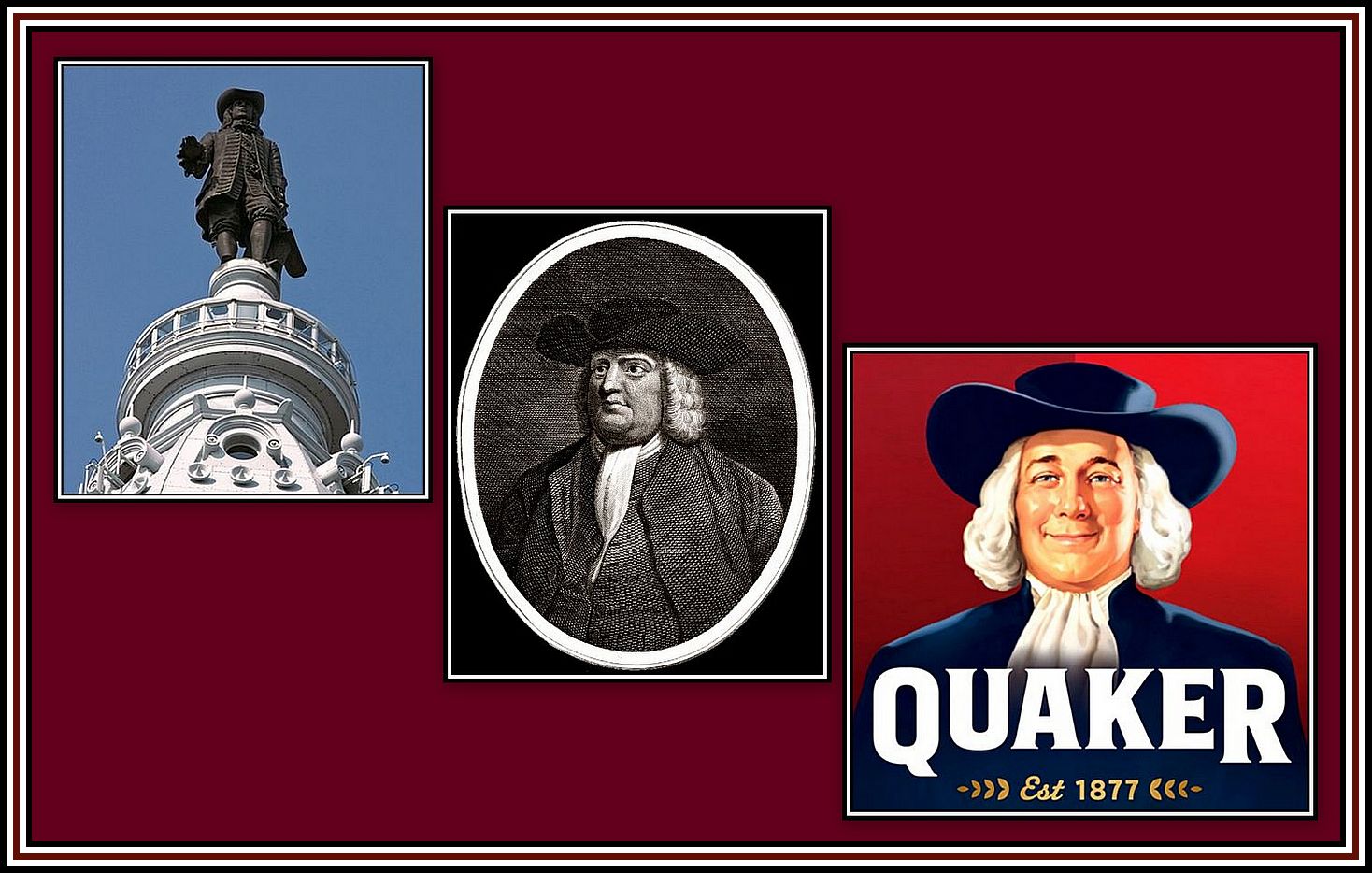 Left: William Penn Statue on top of the City Hall; Centre: An Engraving ; Right: Quaker Oats Man
Left: William Penn Statue on top of the City Hall; Centre: An Engraving ; Right: Quaker Oats Man
In 1681, William Penn (1644-1718) was given a large parcel of land in America by Charles II to repay a debt owed to his father. This repayment made him the world’s largest private (i.e. non-royal) landowner with 45,000 square miles and covered what is now the present day Commonwealth of Pennsylvania and the State of Delaware. He first named the land New Wales and then Sylvania, meaning forests or woods in Latin. However, Charles II renamed the land Pennsylvania after William Penn’s father.
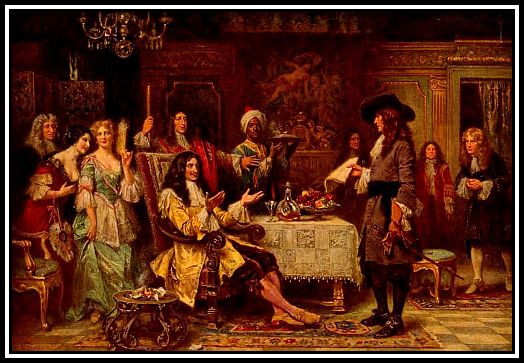 The Birth of Pennsylvania in 1680 by Jean Leon Jerome Ferris (1863-1930)
The Birth of Pennsylvania in 1680 by Jean Leon Jerome Ferris (1863-1930)
Penn sailed for America and arrived at New Castle in 1682. He was a strong believer in democracy and religious freedom and the principles that he introduced to the then Province of Pennsylvania‘s Frame of Government served as an inspiration for the United States Constitution. He was a pacifist and a Quaker and believed in the principles of Early (Primitive) Christianity.
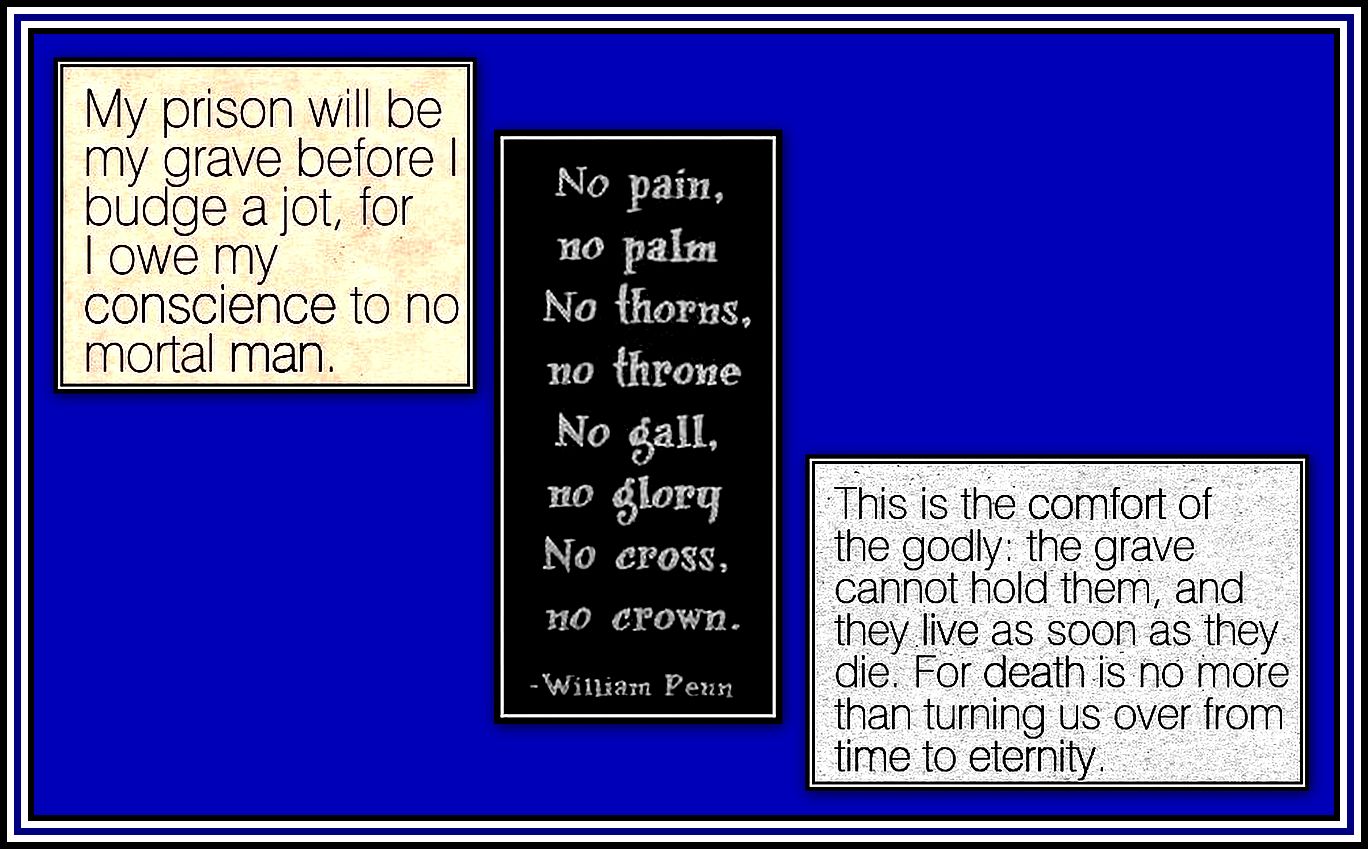 Some of the Quotes of William Penn
Some of the Quotes of William Penn
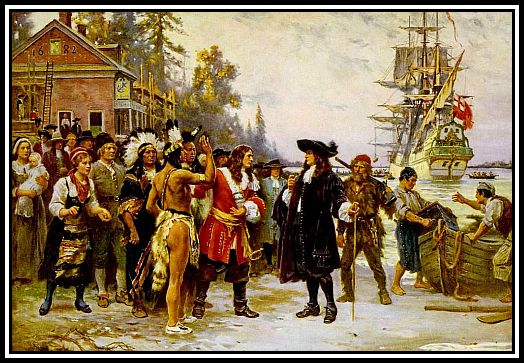 The Landing of William Penn by Jean Leon Jerome Ferris
The Landing of William Penn by Jean Leon Jerome Ferris
William Penn made a number of treaties with the Lenape Indians who lived in the area, which were never broken in his lifetime. Although he gained a reputation for tolerance and benevolence, his efforts in the Province actually brought about an effective colonisation of the Lenape homeland.
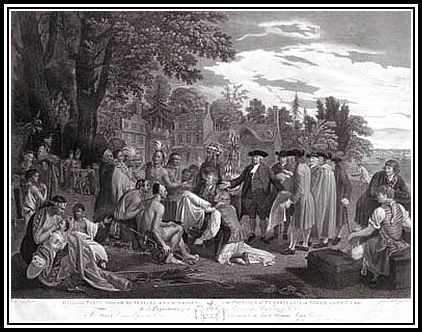 William Penn’s Treaty with the Indians by John Boydell (1719-1804)
William Penn’s Treaty with the Indians by John Boydell (1719-1804)
William Penn was responsible for the planning and layout of the City of Philadelphia, which was to become known as The City of Brotherly Love.
-oOo-
By the 1750s, Philadelphia had become the largest city and busiest port in British America. A number of important buildings had been constructed by this time including Christ Church, between 1727 and 1744, and Independence Hall (the Pennsylvania State House), between 1732 and 1753. In addition, the streets were paved and illuminated by gaslight and the city’s first newspaper, the American Weekly Mercury, had already began publishing since December 1719.
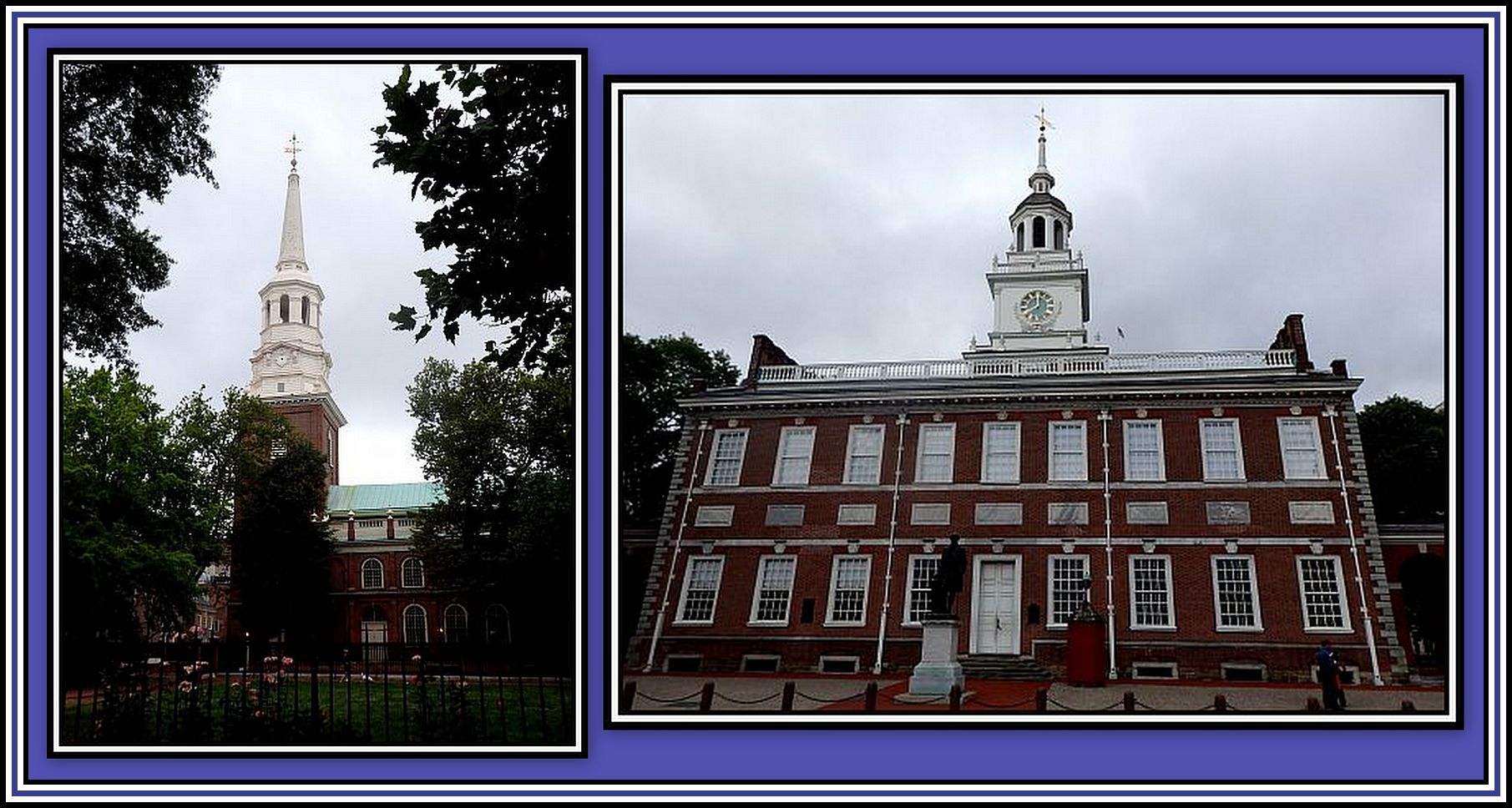 Right: Christ Church; Left: Independence Hall
Right: Christ Church; Left: Independence Hall
Benjamin Franklin (1706-1790) came to Philadelphia in 1723 and played a major role in the development of the city. He founded the Union Fire Company and was one of the city’s postmaster generals and established postal routes between Philadelphia and other cities. In addition, he helped raise money to build the first hospital in the American Colonies and the College of Philadelphia. In 1754, with the outbreak of the French and Indian War, he was responsible for recruiting militia.
 Benjamin Franklin – Left: painting by Jean-Baptiste Greuze
Benjamin Franklin – Left: painting by Jean-Baptiste Greuze
Philadelphia was the site of a number of major events associated with the American Revolutionary War:
- in September 1774, the First Continental Congress convened at Carpenter’s Hall here;
- the Second Continental Congress convened at the Pennsylvania State House in May 1775;
- the Declaration of Independence was ratified at the Pennsylvania State House on the 4th July, 1776;
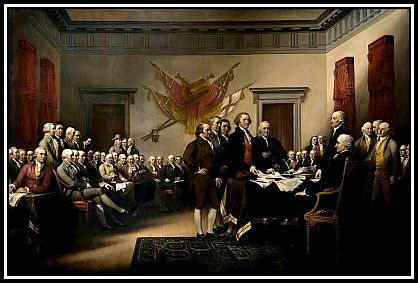 The Signing of The Declaration of Independence by John Trumbull
The Signing of The Declaration of Independence by John Trumbull
- the first official public reading of the document was by John Nixon in the yard of Independence Hall on the 8th July; and
- the formal ending of the American Revolutionary War (1775-1783) officially ended with the signing of the Treaty of Paris, which was ratified at the now Congress of the Confederation here on the 14th January, 1784.
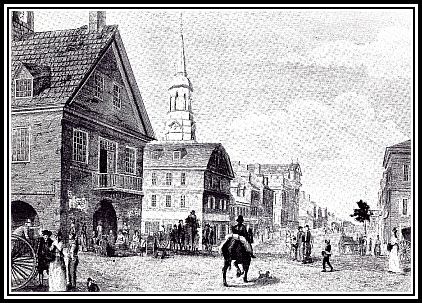 Philadelphia’s Second Street when it was the largest shopping area in the country
Philadelphia’s Second Street when it was the largest shopping area in the country
-oOo-
I WENT TO PHILADELPHIA ……..
I remember the first time I went to Philadelphia. It was during my first trip to the U.S. and it was at Easter time. We had just seen the cherry trees, then in full blossom, around the Tidal Basin in Washington D.C. We were lucky, as we had arrived exactly when the blooms were at their fullest. It was a spectacular sight.
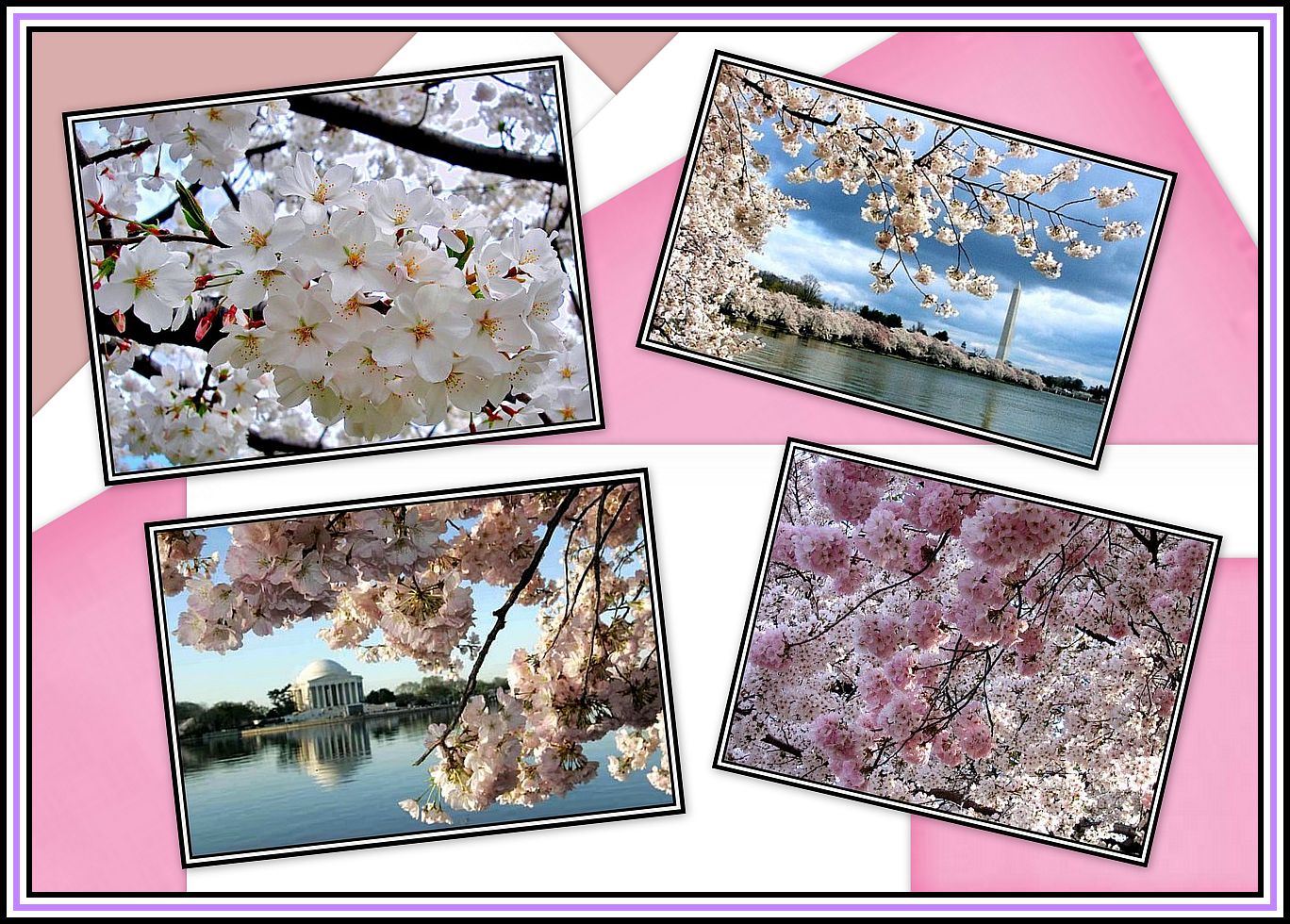 The Tidal Basin. Washington D.C.
The Tidal Basin. Washington D.C.
-oOo-
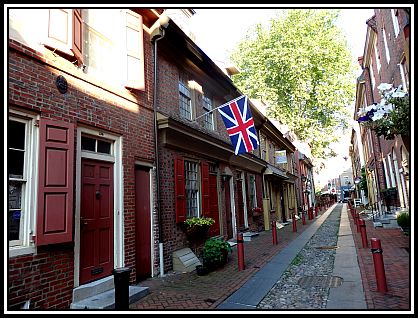 Elfreth’s Alley, which was in ruins when I first saw it
Elfreth’s Alley, which was in ruins when I first saw it
We arrived in Philadelphia early on a Sunday morning and were planned on going to Atlantic City in the late afternoon. And so my first encounter with the City of Brotherly Love was going to be necessarily quick.
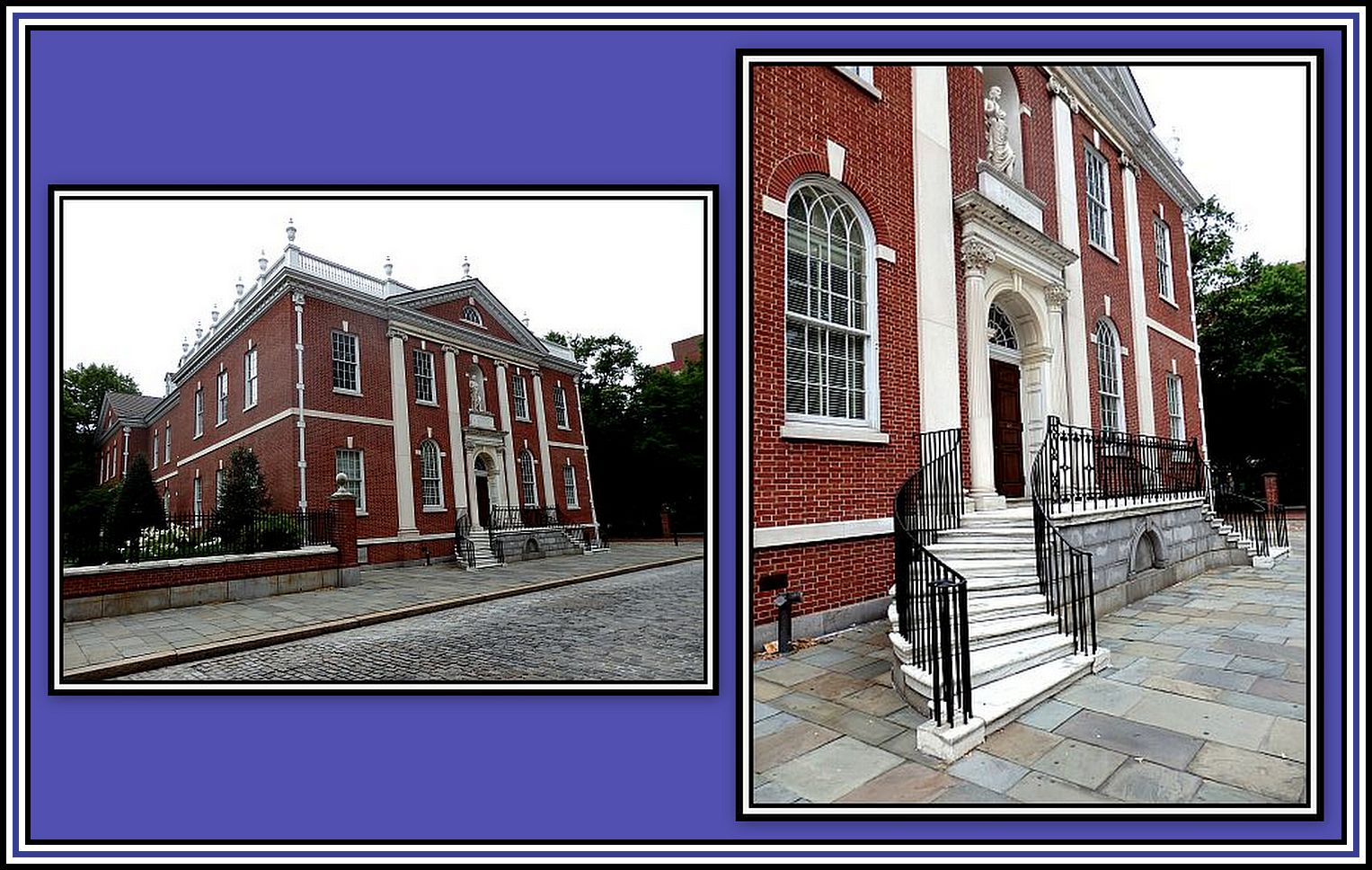 Library Hall – a favourite building of my parents when they visited Philadelphia
Library Hall – a favourite building of my parents when they visited Philadelphia
I recall that the downtown area was deserted, which made me smile and think of the quote said to have originated with W.C. Fields (1880-1946) ….. I went to Philadelphia, but it was closed.
It seems that this comment is a distortion of an epitaph that Mr. Fields proposed for himself in 1925 and quoted in the magazine, Vanity Fair:
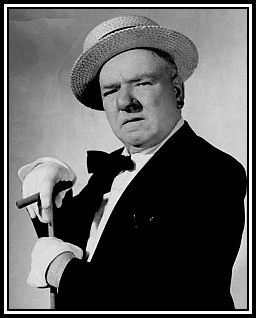 Here lies W. C. Fields. I would rather be living in Philadelphia.
Here lies W. C. Fields. I would rather be living in Philadelphia.
The epitaph has also been simplified to I’d rather be in Philadelphia and used to comment on an unhappy situation.
Sadly, thanks to Mr. Fields, who incidentally was born in Philadelphia, the city gained a poor reputation for being a dull place where fun and frivolity were in short supply. This reputation seems to have remained with the City despite it becoming a vibrant bustling place where today there is plenty to do and see. However, as the French say:
Quand on a une mauvaise réputation, il est très difficile de le perdre
which means ……
When one has a bad reputation, it is very difficult to lose it!
When I first visited Philadelphia, there was a gentlemen’s agreement that no building should be higher than Penn’s statue on top of City Hall.
During the late 1980’s, this agreement was evidently ignored and sky scrappers began to dot the Philadelphia skyline bringing the City in line with other North American cities.
-oOo-
ASSOCIATIONS
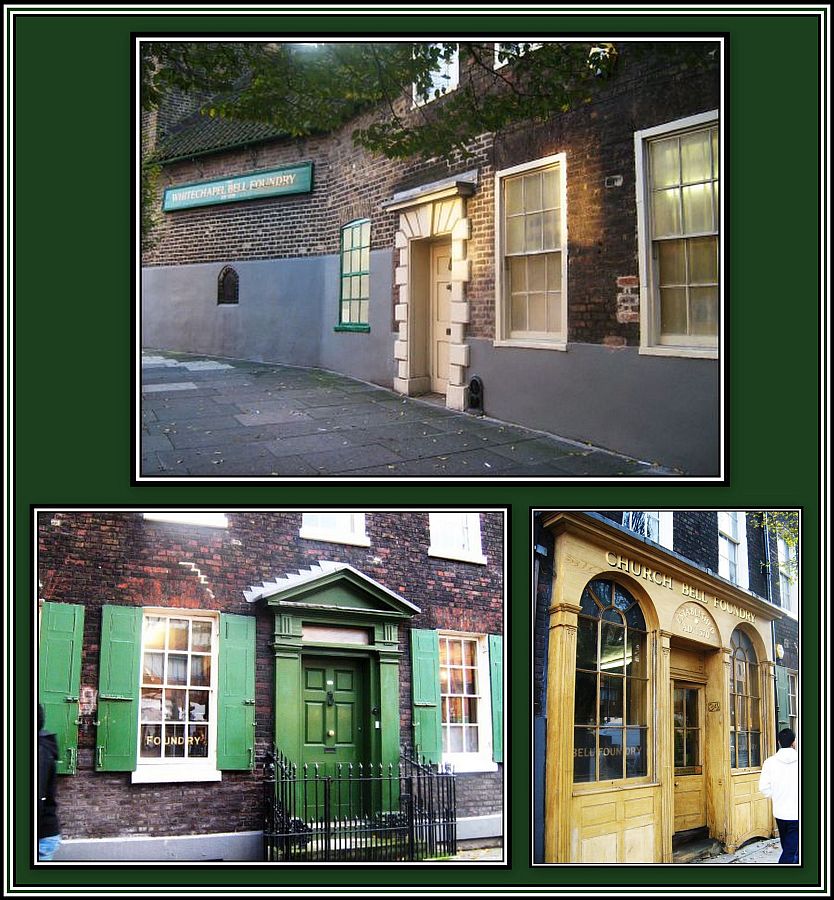 The Whitechapel Bell Foundry where The Liberty Bell was cast
The Whitechapel Bell Foundry where The Liberty Bell was cast
I have two personal associations with Philadelphia: firstly, I spent my childhood not a stone’s throw from the Whitechapel Bell Foundry in the East End of London, which is where the Liberty Bell was cast in 1752; and secondly, once I moved from London to Slough, I noticed that there was a school in the town named for William Penn.
Incidentally, Slough is only a few miles east of Ruscombe near Twyford where William Penn died in 1718 and also a few miles south of Chalfont St. Giles, which is close to where he and his second wife, Hannah (1671-1826), are buried in the cemetery of the Jordans Quaker Meeting House.
His burial maker is extremely simple stating his name and that of his wife and the dates of their respective demises.
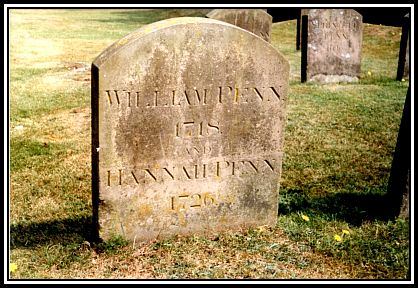 The Gravestone of William Penn and his Wife, Hannah
The Gravestone of William Penn and his Wife, Hannah
No elegy or ivy-mantled tower —
For William of the Philadelic State
Rests secret in his friendly Jordans bower
Interred with Hannah, many years his mate.
While other Penns chose pomp and Poges’ vault,
This pilgrim lived and died below the salt.
The photographs of the Jordan’s Meeting House, the gravestone and epitaph (copyright of John Owen Smith) appear by permission of John Owen Smith
Incidentally, the village of Jordans is also the site of the Mayflower Barn, which is said to be made from the timbers of The Mayflower.
-oOo-
I CAME TO PHILADELPHIA ……..
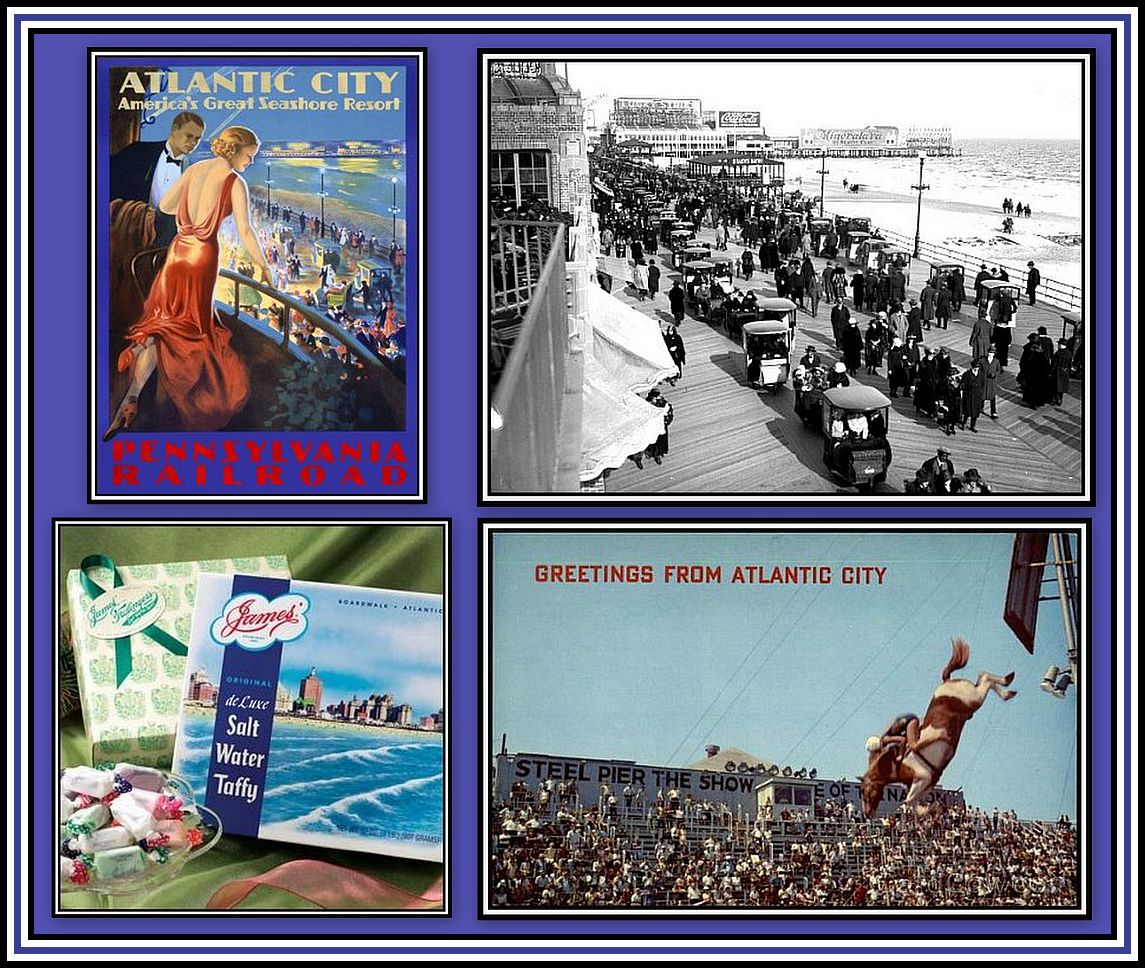 Atlantic City Memories: Salt Water Taffy, The Boardwalk & The Diving Horse
Atlantic City Memories: Salt Water Taffy, The Boardwalk & The Diving Horse
Since that initial visit, I have been to Philadelphia a number of times. However, my visits were always part of trips to other places and never to specifically spend time there. Most often my trips were to Atlantic City where I attended various conferences that took place there before gambling was legalised in New Jersey. At that time, Atlantic City welcomed conference participators during those early spring days since hotels and restaurants were doing little business. I always enjoyed my visits here, as I liked to see the sea and walk along the Boardwalk and also stay at the Hotel Marlborough-Blenheim, which was demolished in 1978. Once gambling came on the scene, things changed and the conferences had to find another venue.
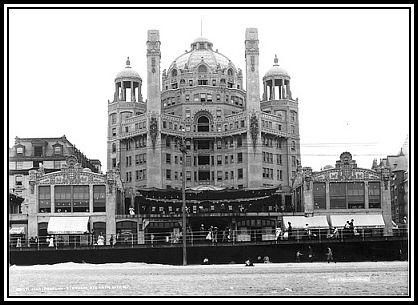 The Blenheim part of the Hotel Marlborough-Blenheim
The Blenheim part of the Hotel Marlborough-Blenheim
During my brief stays in Philadelphia, I must have been too busy visiting the numerous sites of interest including the Liberty Bell and evidently had no thoughts of visiting the city’s department stores. Alas, in those days department stores held no interest and were not visited unless I had to absolutely buy something!
Generally there is little point in having regrets. One can’t go back in time and relive an event and change it. Despite knowing this, I do regret not having known that Philadelphia was where one of the most interesting department stores had been built and where a spectacular organ had been installed and was played while customers shopped. Still, I know this now and that is what is important!
-oOo-
I recall an amusing incident that took place while we were trying to find our way out of Philadelphia during my first trip. I remember that we were driving down around the city down deserted streets. Suddenly, when we turned onto what I later learned was South Street, we were surrounded by what looked like thousands of young boys and girls who were waiting for the the businesses to open. What was amusing was not the numbers of kids who were dressed in colourful clothes and were laughing and joking and spilling into the streets, as the boys teased the girls, but rather the noise they were making. The din was deafening, The noise came mostly came from the girls who giggled and screamed, as they pretended to protest, as the boys chased and tormented them. Obviously everyone was having a great time and I found myself laughing along with the kids. Later I learned that South Street was where all the young folks meet!
—ooOoo—
RENEWING AN OLD ACQUAINTANCE
I remember hearing an Organ on the radio in the early 1970s when I lived in Canada. I hate to admit that although I enjoyed the programmes very much, I failed to register anything about the Organ, and only recently realised that I had been listening to The Wanamaker Organ. My lack of knowledge also extended to the Store and the organist. I hang my head in shame!
I also hate to admit that my reacquaintance with The Wanamaker Organ only came about once I started work on The Theatre Organ series.
I was astounded to read that there was a huge pipe organ installed in a department store in Philadelphia. In Philadelphia? How was it that I was able to go to Philadelphia on a number of occasions and never notice the store or hear of the organ? How could I have missed seeing it, and more importantly, how was it I had not heard it being played?
-oOo-
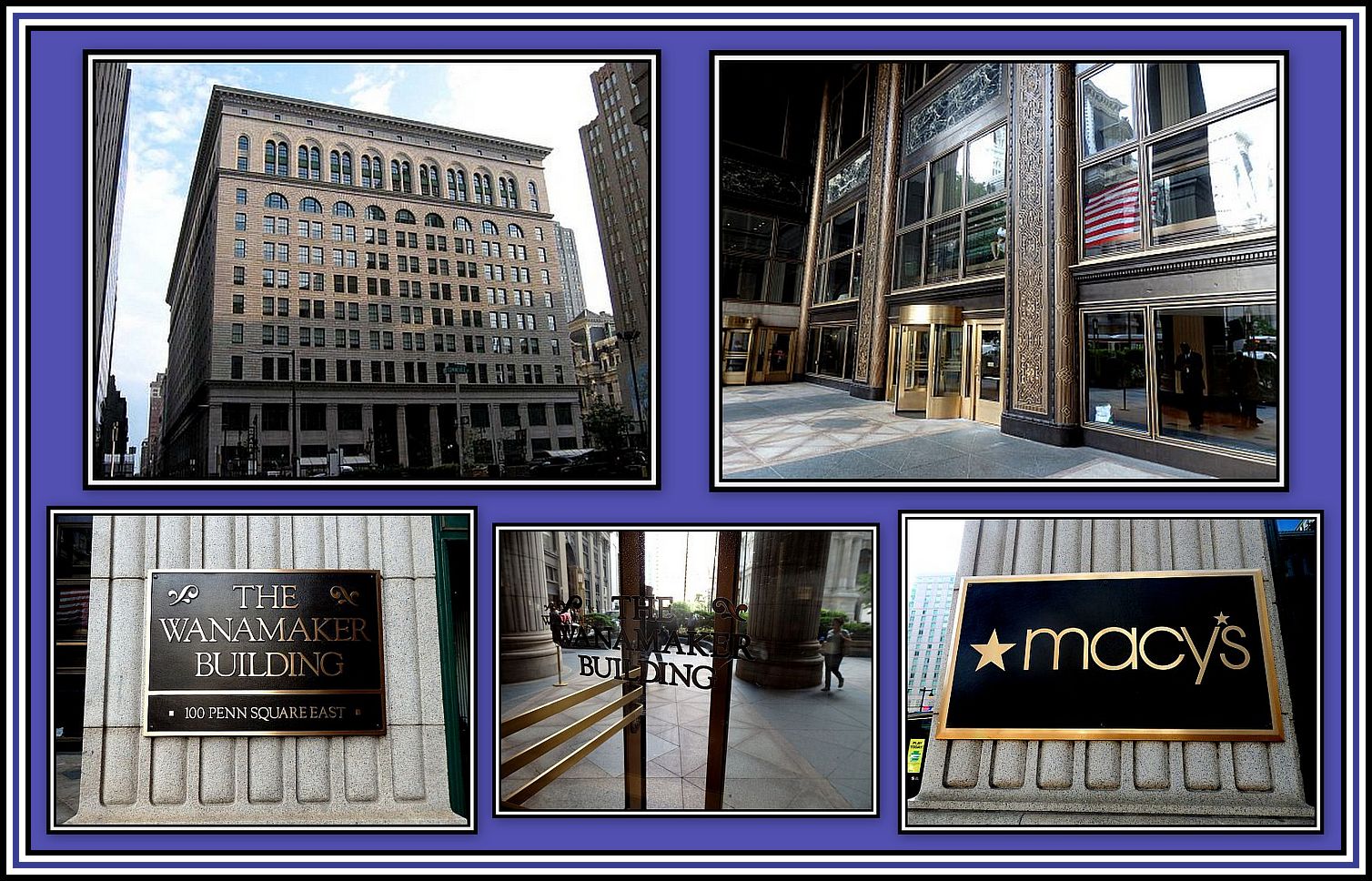 The Erstwhile Wanamaker Store, now part of R.H. Macy & Company
The Erstwhile Wanamaker Store, now part of R.H. Macy & Company
Click Here to watch a short news report on The Wanamaker Organ
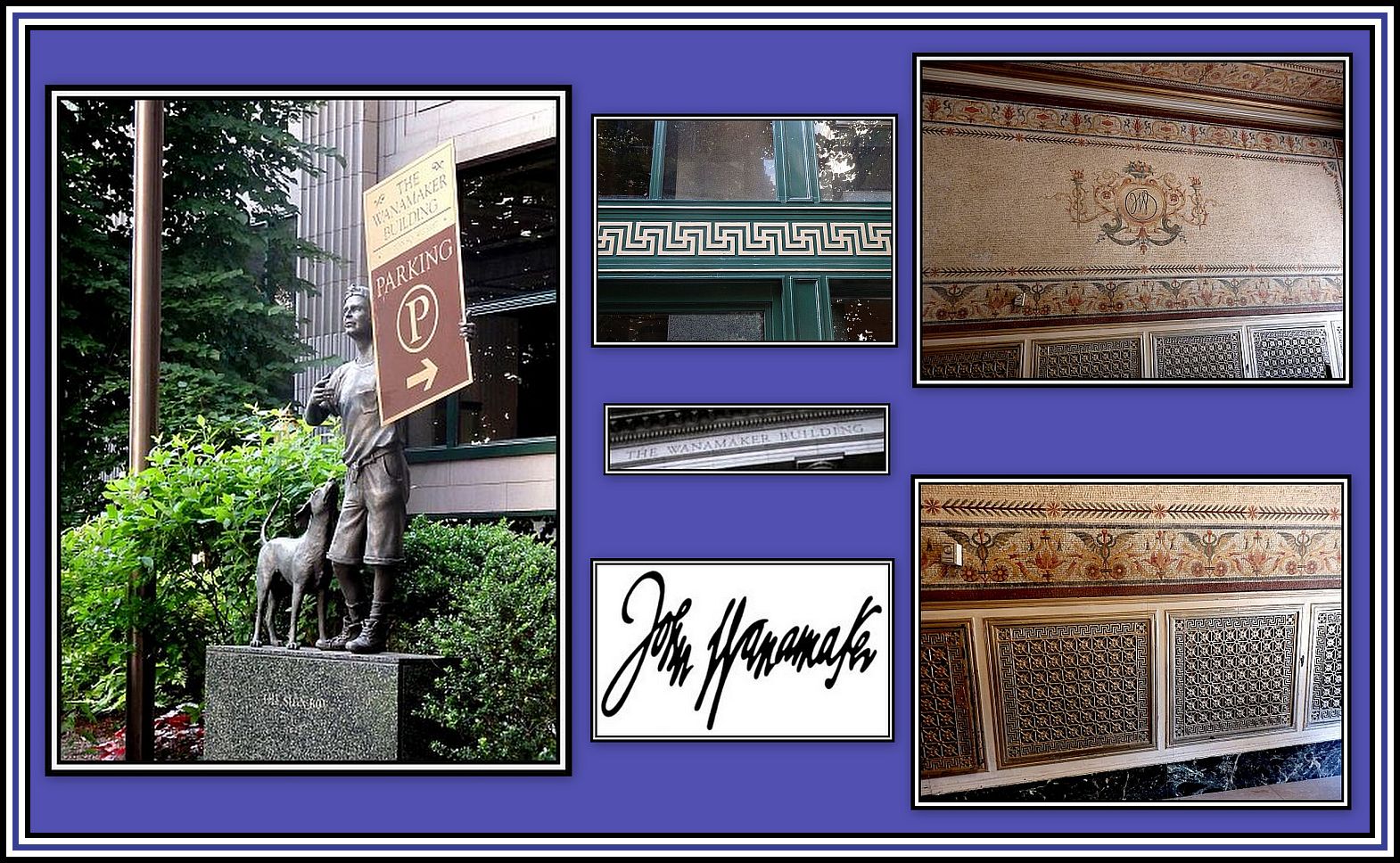 The Store Boy who stands outside the entrance and points the way in
The Store Boy who stands outside the entrance and points the way in
Each year since 1994, The Wanamaker Organ Day is held in the erstwhile Wanamaker Department Store in Philadelphia where the Organ has been housed since its installation in the Grand Court in 1911. In 2006, R.H. Macy & Company took over running the store and has graciously entered into the spirit that ensures the continuation of the annual festivities that is made possible by a dedicated staff and members of The Friends of the Wanamaker Organ.
——oooOOOooo——
ACKNOWLEDGEMENTS
I would like to thank Mr. John Owen Smith for allowing his epitaph of William & Hannah Penn to appear here.
——oooOOOooo——
Click here to go to THE WANAMAKER ORGAN – PART THREE:
CONCERT DAYS
——oooOOOooo——
Click here to return to THE WANAMAKER ORGAN – PART ONE:
HISTORICAL BACKGROUND
——oooOOOooo——
Click here to go to THE WANAMAKER ORGAN – HOME PAGE
——oooOOOooo——
Click here to return to the TABLE OF CONTENTS
——oooOOOooo——

